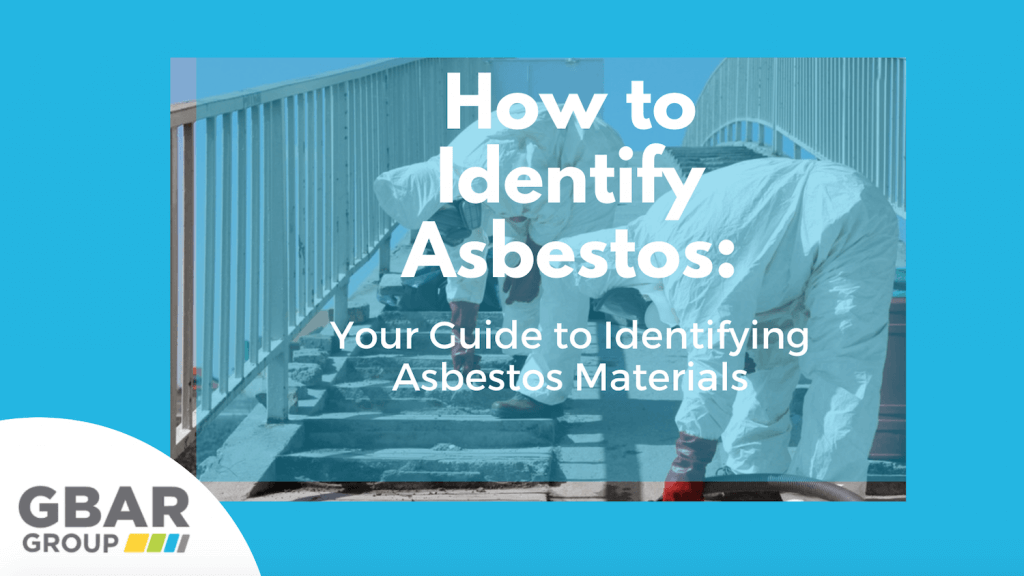
How do I identify asbestos? It’s a question that has been asked by homeowners and professional builders in Australia for more than half a century.
Unfortunately, it’s a difficult question to answer. Identifying asbestos fibres isn’t always simple. Asbestos fibres are very small, thin, and difficult to distinguish. Asbestos is a naturally occurring mineral that is relatively easy to extract and when mined and available in large quantities. Asbestos was widely used in the Australian construction industry in the second half of the 20th century due to the fact that it was inexpensive to produce, easily accessible, and the fibres withhold a number of beneficial properties.
The nature of asbestos fibres means they have a number of good construction qualities, including:
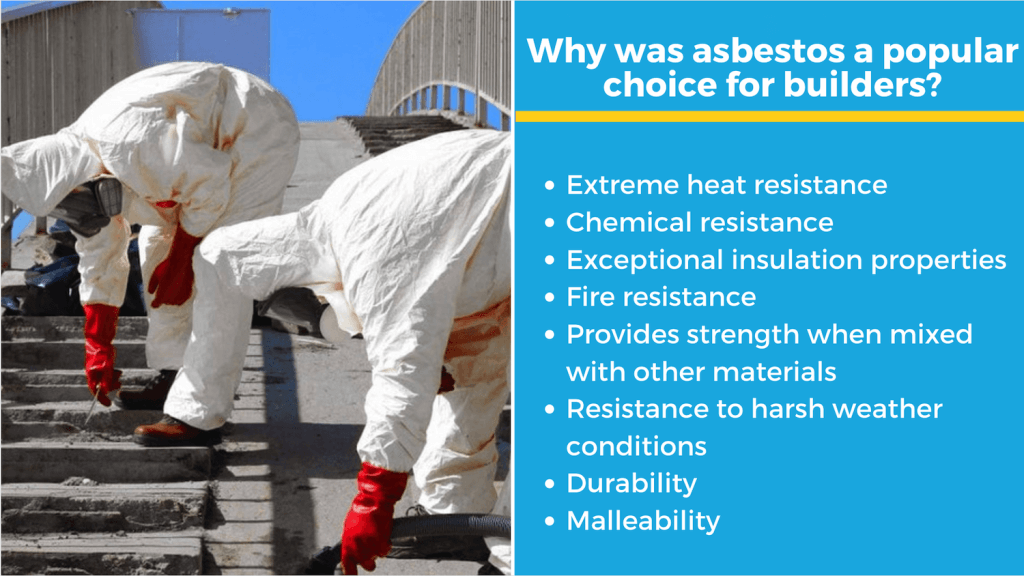
- Extreme heat resistance
- Chemical resistance
- Exceptional insulation properties
- Fire resistance
- Provides strength when mixed with other materials
- Resistance to harsh weather conditions
- Very Durable
- Malleability
Prior to the knowledge of asbestos being harmful, it was widely used in the construction and manufacturing industry all over the world. The material was abused to such an extent, that the legacy asbestos has left behind is thought to take multiple decades to entirely remove.
What Is Asbestos?
In order to identify asbestos, and know what asbestos looks like, we need to understand the mineral. The term asbestos actually refers to six unique minerals, divided into two family groups – serpentine and amphibole.
Serpentine asbestos is made up of curly fibres within sheets of crystals. The single type of asbestos in the serpentine family, chrysotile, accounts for about 95% of asbestos materials used around the world. Amphibole asbestos is made up of needle-shaped fibres. Studies have shown that small exposure of amphibole asbestos can pose a much higher risk than serpentine asbestos might. However, all forms of asbestos are a known carcinogenic and there is no “safe” amount of asbestos exposure.
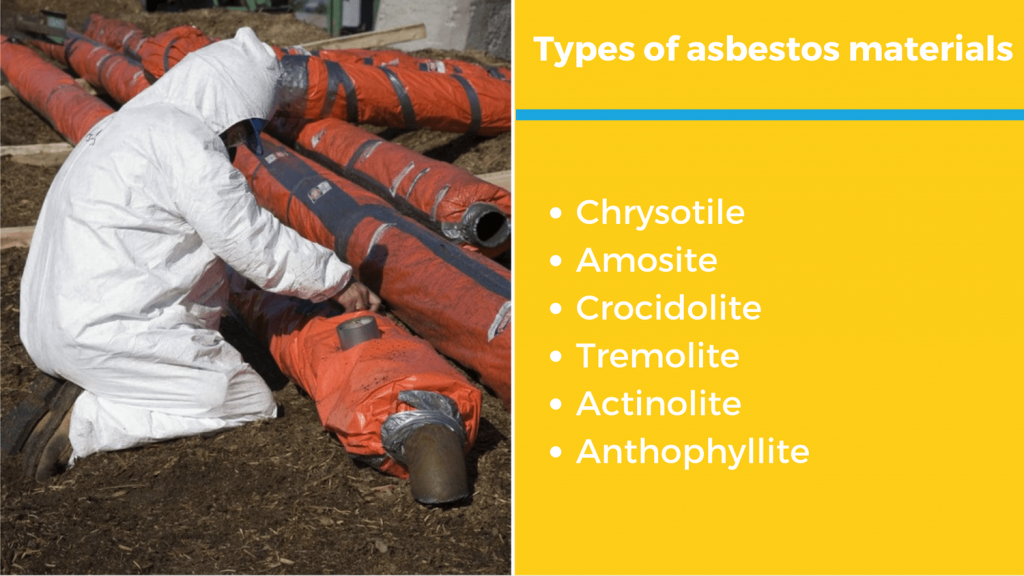
Chrysotile – Chrysotile asbestos is the most commonly used form of asbestos and is often distinguished by white asbestos. The fibres of chrysotile are very fine, flexible, and resistant to high temperatures. Chrysotile was commonly used mixed in with cement, in brake pads and roofing sheets.
Amosite – Amosite asbestos is known for its strength properties and resistance to high temperatures. It was commonly known as the brown asbestos and is thought to be the most harmful of asbestos fibres. Amosite was used heavily in cement sheeting and insulation for plumbing and electrical wires.
Crocidolite – Crocidolite asbestos fibres are extremely thin and can easily become lodged in the lung cavities if inhaled. Commonly known as blue asbestos, crocidolite can be identified by its colour and fine, brittle nature. It was often used in ceiling tiles, fireproofing, and insulation.
Tremolite – Tremolite asbestos was not sold commercially but was often found as a contaminant in chrysotile asbestos. Traces of tremolite can be found in paint, sealants, and asbestos insulation products. Tremolite actually can manifest in several colours like white, green, and grey.
Actinolite – Actinolite asbestos fibres are very light and generally dark in colour. Actinolite fibres can be found as brittle, fibrous, dense, or compact, and expand when exposed to heat, so make for a good insulator. Actinolite was commonly used as an insulator and to fireproof other materials.
Anthophyllite – Anthophyllite asbestos fibres are a grey-brown colour and can be found as a common contaminant in composite flooring. It was classed as a non-commercial product, however, it was regularly used in products that contained talc and vermiculite, like talcum powder. Anthophyllite is said to be the least harmful of asbestos fibres, however, no asbestos fibre is safe for human exposure.
History of Asbestos in Australia
Asbestos was once used in Australia in over 3,000 different products. The mineral was heavily mined in several locations in Western Australia and New South Wales. Asbestos widely used in a variety of workplaces from the 1930s right up until the 1980s, when the inherent dangers were finally acknowledged.
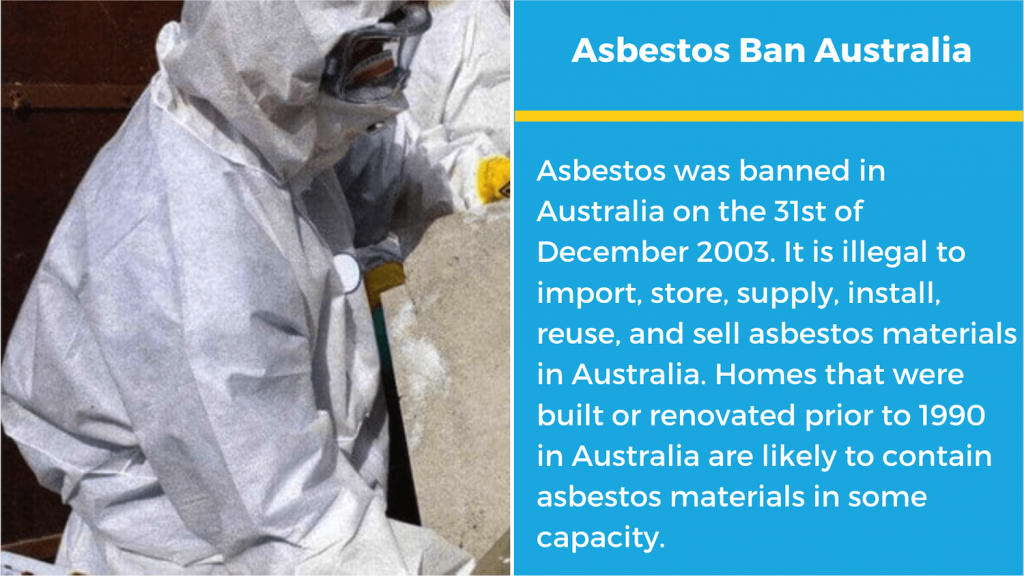
During the 1980s, asbestos cement materials were slowly phased out in favour of asbestos-free materials. During this period, a ban was placed on the use and import of brown asbestos, blue asbestos, and asbestos-containing products.
The Asbestos ban Australia saw in 2003 was introduced to extensively restrict all use, re-use, importation, selling, buying of and transporting of all asbestos materials. The current restrictions on asbestos in Australia are heavily regulated, along with the strict legislation on who may carry out asbestos removal and disposal.
Types of Asbestos Materials
In Australia alone, asbestos cement materials were first manufactured in the 1920s and were commonly used to construct houses and buildings from the 1940s to the 1980s.
You’re probably wondering how to know if your home has asbestos. Many houses built before 1990, therefore, are likely to contain asbestos cement materials and asbestos-containing products. If your house was built before 1990, take the time to consider these materials that might have been used to construct your house.
Bonded asbestos products
Majority of asbestos materials used in houses were bonded asbestos products, meaning the asbestos was mixed with another component to construct materials. Bonded household products include:
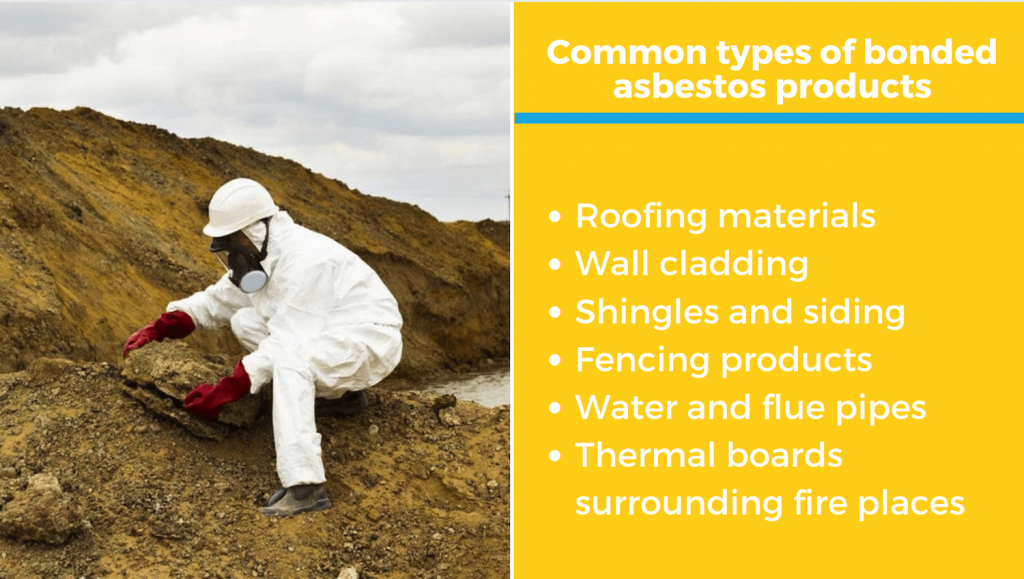
- Roofing materials
- Wall cladding, interior and exterior
- Eaves
- Shingles and siding
- Fencing
- Water and flue pipes
- Thermal boards around fireplaces
Friable asbestos products
It also wasn’t uncommon for friable asbestos (loose asbestos) products to be used in the construction of a house before the mid-1980s. Friable asbestos products include:
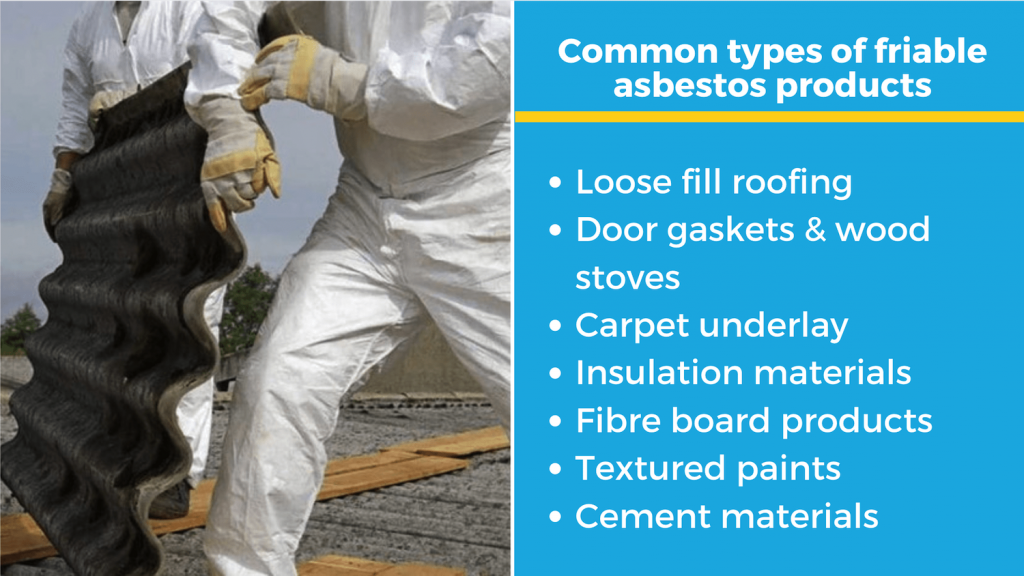
- Loose-fill roofing
- Spray-on insulation or soundproofing
- Asbestos rope door gaskets in wood stoves
- Brick and plaster sealants, fillers, adhesives
- Carpet underlay
- Backing material for floor tiles or vinyl flooring
- Low-density asbestos fibreboard
- Insulation
- Textured paints, decorative ceiling coatings
- Asbestos cement materials that have been badly weathered or damaged
How to Recognise Asbestos
Identifying asbestos isn’t always easy. Asbestos identification can be difficult without the appropriate training and experience, and it is not always possible to tell whether a material contains asbestos simply by looking at it.
How to identify asbestos in the home? The short answer is, you may not be able to identify asbestos yourself. To the naked eye, asbestos fibres are so tiny they are almost invisible. If you suspect a material contains asbestos, you can have it sampled and tested by an asbestos technician. That being said, positively identifying asbestos can also be accomplished under a few circumstances.

If you have access to the right paperwork, check the manufacturer and product name on the insulation label and do some research into the product to see if it contains asbestos. If the manufacturing label has a date from between 1940 and 1980, it has a higher chance of containing asbestos material.
Not sure how to tell if it is asbestos? Sometimes asbestos materials can show a pattern on the surface of a product that looks like small dimples or shallow craters all over the surface. Later on, materials that were used instead of asbestos didn’t leave the same texture. This isn’t a fool-proof asbestos identification technique; however, it may be an indicator of asbestos materials that were used in your house.
Signs of asbestos may be in the form of indication markers. Often manufacturers marked products like insulation when asbestos fibres were used. If the information discloses the use of asbestos, it will either say AC (contains asbestos) or NT (does not contain asbestos).
While there are some ways to determine if asbestos is in your house, it is not recommended for homeowners to go searching for asbestos products. If the materials do contain asbestos and are friable, you are at risk of unknowingly exposing yourself to the toxic fibres. The best course of action when trying to identify asbestos in the home is to get an expert analysis.
How to Test for Asbestos
One of the most common questions homeowners ask is “how to identify asbestos in the home?”. There are plenty of answers on Google, however, asbestos identification can be concisely and simply completed with an asbestos test. Asbestos-containing materials can be identified by having the material tested by a specialist laboratory.
Who can test for asbestos?
Only experienced professionals are able to take an asbestos sample, such as:
- Licensed asbestos removalists and testers
- Occupational Hygienists
- An accredited laboratory
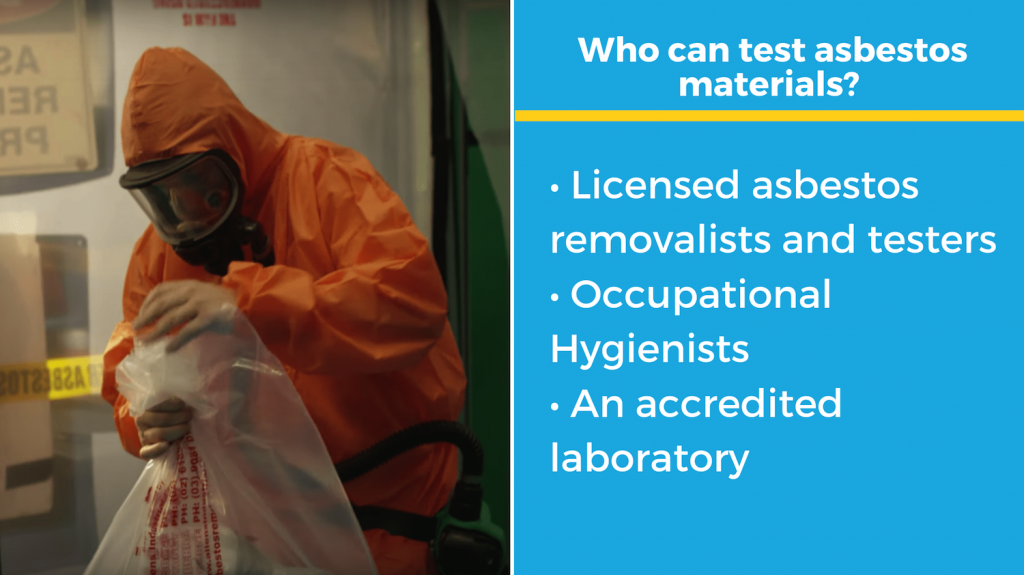
How to Identify Asbestos & Have it Tested
It is legal for an Australian homeowner to take their own sample of a material to have it tested for asbestos. Airsafe Australia lay out strict guidelines on how the sample must be taken and the necessary safety precautions one should take while handling the material. That being said, it’s not recommended for people to take their own samples, as they are putting themselves at risk of accidental asbestos exposure.
An inspection by a qualified asbestos consultant will entail a sampling. Most asbestos removal specialists will have the equipment and training to undertake asbestos tests safely and have them sent to an accredited NATA laboratory for the results.
Wondering how to test ceiling for asbestos? If you’re not sure how to approach taking a sample yourself, follow these guidelines for the best safety precautions you can take to avoid asbestos exposure. Once you’ve taken the asbestos sample from your ceiling, it’s best to have it tested by an accredited NATA laboratory.
How to Identify Asbestos Sheeting
Cement-based products often contained asbestos in order to enhance the overall strength and durability of the material. This meant that they were widely used for many construction materials, namely asbestos sheeting for roofs. They were traditionally used in a number of applications including garages, sheds, commercial buildings and bungalows.
Over time asbestos sheets may have been replaced with asbestos-free alternatives, but if they are particularly old and look weathered, they are likely to contain asbestos cement. Asbestos sheeting identification can be presumed by getting an idea of how long ago the sheeting was installed (before or after the 1990s) and whether it was ever replaced. Having asbestos tested will be able to provide a comprehensive result on whether the sheeting contains asbestos.
What Does Asbestos Paint Look Like?
Asbestos was a common ingredient in many houses and vehicle paints for many years from the 1930s until the 1980s. It was used as a filler that gave paint extra body, while also allowing the paint to flow well and stay stable in both hot and cold temperatures. The nature of asbestos meant that it was incredibly dangerous while the paint was wet, and the fibres could become airborne. Once the asbestos paint was applied and dried, it was relatively bound and did not pose a risk.
Because asbestos was an addition to the paint mix, it is not easy to recognise asbestos paint by looking at it. However, asbestos paint only poses a risk when the paint is wet, or when the paint becomes damaged and crumbly. Paints that contained asbestos should be clearly labelled by the manufacturer on the paint tin that was used. If you’re worried about asbestos paint in your home and do not have access to the manufacturer’s label, arrange for an asbestos specialist to take a sample and have it tested for you.
How to Tell the Difference Between Asbestos and Fibre Cement
Fibre cement sheeting or fibro cladding is perhaps one of the most common building materials found in older buildings. It was widely used in the construction of both residential and commercial properties from the 1950s. During this period, asbestos was a common addition to fibro cladding to enhance the strength of the overall product. However, not all fibro contains asbestos. Modern fibro equivalents are asbestos free and are made with wood pulp cellulose fibres. Asbestos was formally phased out as an ingredient in the 1980s by most manufacturers. Below is a list from the Department of Health and Ageing, of when products stopped being manufactured with asbestos fibres. This should help you out when trying to work out whether the product was made with materials containing asbestos.
- Hardiplank 1981
- Villaboard 1981
- Hardiflex 1981
- Versilux 1982
- Drain Pipe 1984
- Harditherm 1984
- Highline 1985
- Super Six 1985
- Shadowline 1985
- Coverline 1985
- Roofing accessories 1985
- Pressure Pipe 1987
What Does Asbestos Wall Insulation Look Like?
Asbestos was commonly used as insulation due to its beneficial heat insulation properties. In order to identify whether or not your insulation contains asbestos, you may be wondering what asbestos insulation looks like.
Loose asbestos insulation should be treated with extreme caution. The fibres are uncovered and can easily be inhaled, posing large health risks on those in the immediate vicinity. The insulation is blue-grey or white in colour, has a very fluffy texture, and is similar to candy floss in appearance.
Vermiculite asbestos insulation is made from a natural mineral, that expands when heated and is lightweight. It is typically grey-brown or slivery-gold in colour and has a pebble-like appearance.
If your house insulation fits either of these descriptions and you suspect it contains asbestos fibres, avoid disturbing it at all costs. Asbestos fibres will become airborne if you handle, disturb, move or damage the insulation containing asbestos. The best course of action is to have an asbestos removalist take a sample to verify your identification and remove the materials safely.






